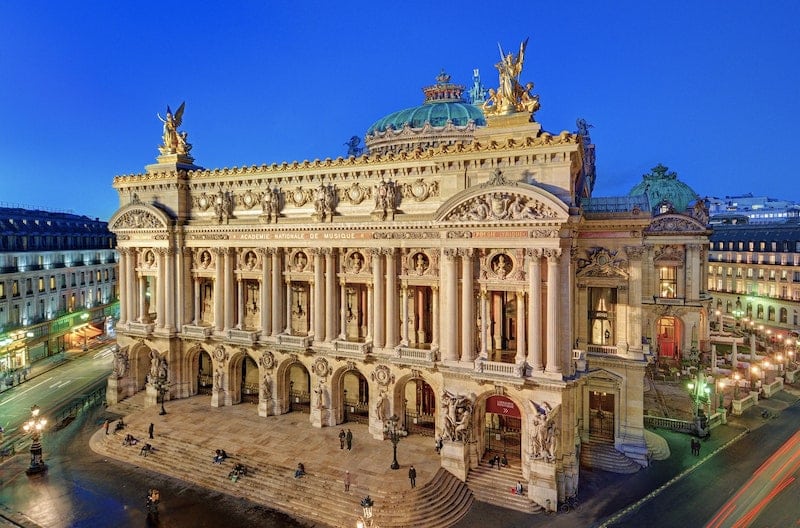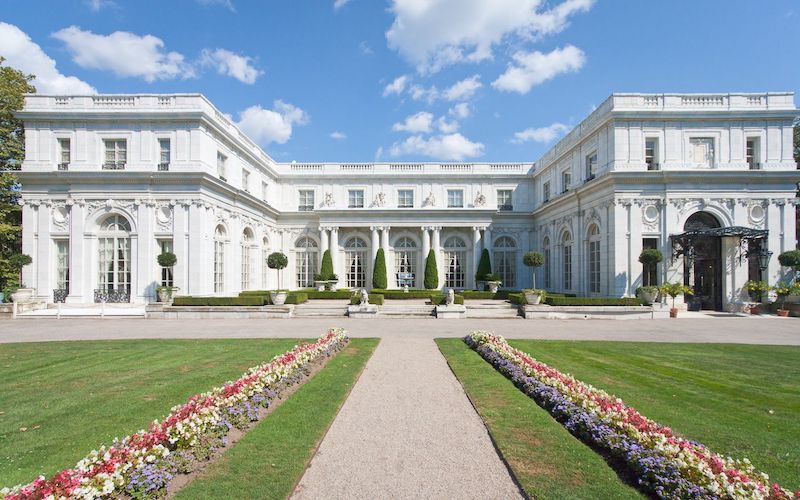Lets Explore The Beaux Arts Architecture Style
What is the Beaux Arts architecture Style?
The Beaux Arts architecture style, also known as the Beaux-Arts movement or the École des Beaux-Arts style, emerged in the late 19th century and was prevalent until the early 20th century. It originated in France and became popular in many parts of the world, particularly in Europe and the United States.
Beaux Arts architecture was heavily influenced by classical Greek and Roman architecture. It aimed to combine the grandeur and elegance of classical design with the technological advancements of the industrial era. The style was characterized by a sense of monumentality, symmetry, and ornamentation.
Key features of Beaux Arts architecture include:
- Grandeur and Monumentality: Beaux Arts buildings often featured large, imposing facades and impressive entrances. They were designed to evoke a sense of awe and grandeur.
- Symmetry: Symmetry played a significant role in Beaux Arts architecture. Buildings were often designed with a balanced and symmetrical layout, featuring a central focal point and symmetrical wings or extensions.
- Classical Elements: Beaux Arts architecture borrowed heavily from classical Greek and Roman architectural elements. This included the use of columns, pilasters, pediments, and domes, among others.
- Ornamentation: Beaux Arts buildings were highly ornamented. Elaborate decorative details, such as sculptural reliefs, cornices, balustrades, and decorative motifs, were used to enhance the visual appeal of the structures.
- Use of Classical Orders: Beaux Arts architecture employed various classical orders, such as the Doric, Ionic, and Corinthian orders, to define the design and proportions of columns and pilasters.
- Hierarchy of Spaces: Beaux Arts buildings often featured a clear hierarchy of spaces, with grand public spaces located at the center and more private spaces located towards the periphery.
- Integration of Fine Arts: The Beaux Arts movement aimed to integrate different artistic disciplines. Architecture, sculpture, painting, and decorative arts were often combined to create a harmonious overall design.
The Beaux Arts architecture style is classic and easily recognizable. Originating in 19th century France, it mirrors much of the opulence and decoration from that era and region.

The Famed NYC Grand Central Station A Famous And Iconic Beaux Arts Architecture Style
What are some famous examples of the Beaux Arts architecture style?
There are several notable and well-known examples of the famed Beaux Arts architecture style around the world.
Here are some examples of more famous buildings in the Beaux Arts architecture style:
- Grand Palais and Petit Palais (Paris, France): These two iconic buildings were constructed for the 1900 Exposition Universelle (World’s Fair) in Paris. The Grand Palais features a massive glass and iron dome, while the Petit Palais showcases intricate decorative details and a beautiful garden.
- The Metropolitan Museum of Art (New York City, USA): Located on Fifth Avenue in Manhattan, the Metropolitan Museum of Art is one of the world’s largest and most renowned art museums. The museum’s main building is designed in the Beaux Arts style, featuring a grand facade, classical columns, and a prominent central staircase.
- Union Station (Washington, D.C., USA): Union Station is a historic train station in the heart of Washington, D.C. It was built in 1907 and exemplifies the Beaux Arts style with its monumental facade, grand entrance hall, and ornate details. It continues to serve as a transportation hub and a popular tourist destination.
- The Paris Opera House (Palais Garnier, Paris, France): Designed by Charles Garnier and completed in 1875, the Palais Garnier is a magnificent example of Beaux Arts architecture. It features a grandiose facade, opulent interiors with gold leaf, intricate sculptures, and a stunning auditorium with a spectacular chandelier.
- The Boston Public Library (Boston, USA): The Boston Public Library, designed by architect Charles Follen McKim and completed in 1895, is another notable example of Beaux Arts architecture. It showcases a classical facade with arched windows, a central entrance with grand stairs, and an impressive interior courtyard.
- The Museum of Fine Arts (Budapest, Hungary): The Museum of Fine Arts in Budapest is an impressive Beaux Arts building that houses an extensive collection of artworks. It was completed in 1906 and features a grand colonnaded facade, ornate details, and a central dome.
- The Cunard Building (Liverpool, UK): Designed by architect William Edward Willink and completed in 1917, the Cunard Building is a maritime-themed Beaux Arts building. Located at the Pier Head in Liverpool, it showcases a symmetrical facade adorned with nautical motifs and sculptures.
These examples represent the diversity and grandeur of the Beaux Arts style, which left a lasting impact on architectural history and can still be appreciated in these magnificent structures today.
Origin of Beaux Arts Architecture
The style of Beaux Arts evolved from the neoclassicism of the 1700’s and 1800’s. While neoclassical architecture was inspired by the formal architecture of ancient Greece and Rome, there was a demand and desire for less strict, formal designs. The new movement introduced inspiration from the middle ages and the Renaissance. This led to the development of Beaux Arts architecture (Beaux Arts meaning “fine arts” in English).

The Palais Garnier in Paris is an iconic example of Beaux Arts Architecture.
Beaux Arts architecture was very popular when it arrived in America, but its reign was short lived. Lasting only from about 1885 to 1925, it became part of the late 19th century American Renaissance movement. In the U.S., the style led to classic “American dream” neighborhoods with large and elaborate houses, wide avenues, and spacious parks.
However, because of the grandiose size of Beaux Arts buildings, it was more commonly used in large public buildings. These include buildings like museums, libraries, and government buildings. Most notably, many buildings in the nation’s capitol, Washington D.C., are built in this style, such as the Library of Congress Thomas Jefferson building on Capitol Hill. Other historic, notorious buildings such as New York City‘s Grand Central Terminal and Carnegie Hall are built in this style as well.

The Thomas Jefferson building of the Library of Congress showcases the Beaux Arts architecture style.
Characteristics of Beaux Arts
Beaux Arts architecture is characteristically symmetrical, grandiose, elaborate, and reminiscent of its formal roots. Its elements are nearly always opulent. Some of the architectural characteristics often seen in the style include balconies, columns, pediments (triangular gables), and balustrades (vertical posts). The exteriors are typically stone, symmetrical, and use either flat or low pitched roofs. They have lots of ornamental decoration on the outside, as well. You will typically see lots of cartouches, medallions and ornate detailing.
Interiors are polished and lavish, including sculptures, grand sweeping stairways, ballrooms, and coats of arms. They often include lots of marble and reflective surfaces. It is formal yet lavish and showy. There are architectural decorations on the inside, as well. This can be in the form of arched doorways and high vaulted ceilings. A great example of this can be seen in the old mansions in Newport, Rhode Island. The Vanderbilt Marble House and Rosecliff Mansion are key examples of this lavish architecture.

The Rosecliff Mansion in Newport, RI is a stunning example of Beaux Arts architecture.
Beaux Arts architecture came from the opulent designs and styles of 18th and 19th century France, and so naturally the interior decoration and styling usually reflects that as well. No luxurious detail is spared, and valuable, historical details are used as the perfect decorations. This makes the romantic, royal antique French rugs perfect for a Beaux Arts interior. Any stately antique piece will do the trick of bringing the feeling of royalty to the Beaux Arts space.

Beaux Arts interiors are lavish and intricate.
Now that you know a little bit more about where Beaux Arts architecture came from, how it was used in its time, and how it became so popular in the United States, continue your journey through the world of French opulence with our curated selection of antique French rugs below. If you would like to learn more or see more pieces, don’t hesitate to browse our website and contact us with any questions.
Here are some beautiful French rugs from the Nazmiyal Collection:
This architecture blog about Beaux Arts architecture was published by Nazmiyal Antique Rugs.








